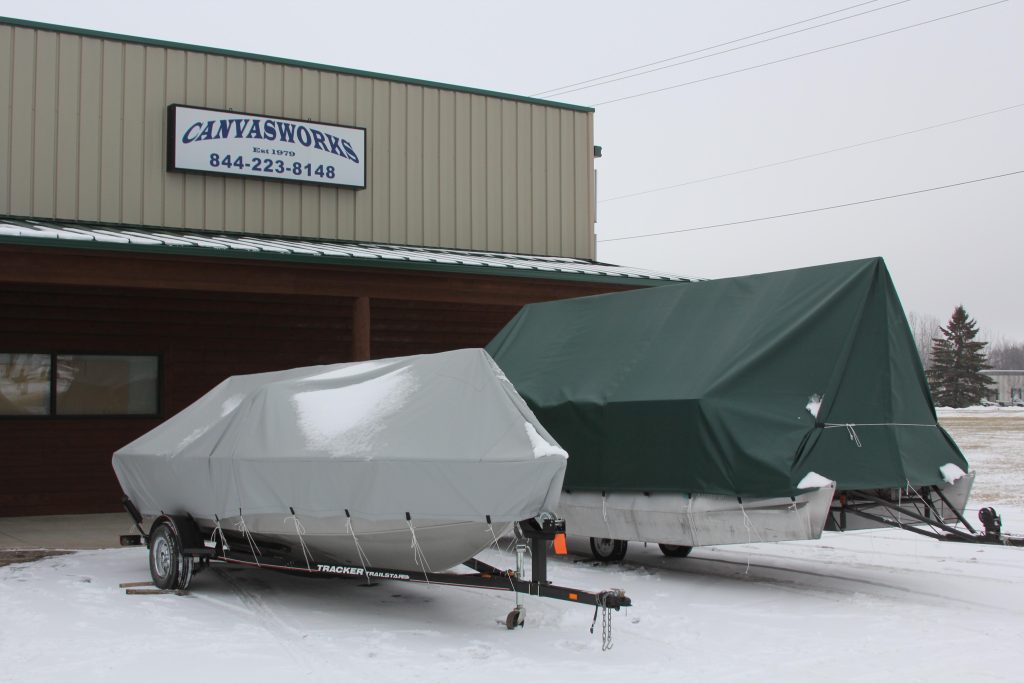Storing your boat or RV during the offseason is more than just finding a spot to park it and calling it a day. Proper storage is essential to protect your investment, maintain its condition, and ensure it’s ready to hit the road or water when the season returns. Whether you’re a seasoned owner or a first-time storer, understanding the key steps and best practices for offseason coverage can save you time, money, and headaches down the line. In this article, we’ll share essential storage coverage tips tailored specifically for boats and RVs to help you safeguard your vehicle through the off months with confidence and ease.
Table of Contents
- Choosing the Right Storage Location to Protect Your Investment
- Preparing Your Boat or RV for Long-Term Storage
- Maintenance Checks to Prevent Damage During Offseason
- Tips for Securing and Covering Your Vehicle Effectively
- In Summary
Choosing the Right Storage Location to Protect Your Investment
Finding an ideal spot to store your boat or RV during the offseason is crucial to ensuring its longevity and maintaining its value. Consider a location that offers protection from harsh weather elements such as heavy rain, snow, and UV exposure, which can cause significant wear and fading over time. While outdoor storage may be convenient, investing in a covered or indoor facility helps safeguard your vehicle from moisture buildup and pest intrusion. Additionally, a storage area with proper drainage and ventilation will prevent rust and mildew, common culprits in damaging boats and RVs left standing for months.
When evaluating storage options, accessibility and security are equally important factors. Choose a location that is easily reachable for routine maintenance checks but also equipped with security measures such as gated access, surveillance cameras, and on-site personnel. This not only deters theft and vandalism but also gives peace of mind that your investment is well-protected. To summarize, a smart choice of storage location involves a combination of climate protection, good ventilation, convenient access, and tight security—all elements that contribute to preserving your vehicle’s condition throughout the offseason.
- Covered or indoor space: Protects against UV damage and moisture.
- Good ventilation: Prevents mold and corrosion.
- Secure access: Reduces risk of theft or vandalism.
- Drainage: Avoids standing water around stored vehicles.
- Convenient location: Facilitates maintenance and quick deployment.
Preparing Your Boat or RV for Long-Term Storage
Before tucking your boat or RV away for the offseason, it’s crucial to perform a thorough cleaning to prevent mold, mildew, and corrosion. Start by washing the exterior with a marine-safe soap or RV cleaner, paying special attention to removing salt, dirt, and grime. Inside, remove all perishable items and thoroughly vacuum to eliminate food crumbs and debris that can attract pests. Consider using moisture absorbers or a dehumidifier to control humidity and reduce the risk of odors and rust. Don’t forget to protect exposed metal parts with a corrosion inhibitor and lubricate moving parts like hinges and locks to ensure they remain in top shape.
Performing routine maintenance before storage can extend the life of your vehicle and simplify the startup process next season. Check fluid levels and, for boats, winterize the engine by flushing out any water and adding antifreeze as recommended. For RVs, disconnect batteries and store them in a climate-controlled area, or at least fully charge and top off water tanks to prevent damage from freezing temperatures. Cover your vessel with a high-quality, breathable cover designed specifically for boats or RVs to shield them from dust, UV rays, and harsh weather. These preparation steps aren’t just about upkeep—they’re smart investments that protect your recreational assets year-round.
- Seal all windows and vents to keep out moisture and critters.
- Remove and store electronics and valuables separately.
- Inspect and patch any cracks or damages to the exterior surfaces.
- Ensure tires are properly inflated or consider removing them for RVs.
Maintenance Checks to Prevent Damage During Offseason
Before tucking your boat or RV away for the season, it’s crucial to perform thorough inspections to catch potential issues early. Begin by examining all exterior surfaces for signs of cracks, dents, or corrosion. Check seals and gaskets around windows, doors, and compartments to ensure they haven’t deteriorated, which could invite moisture and pests. Inside, inspect wiring and hoses for wear or leaks, and test all systems including batteries, brakes, and smoke alarms. Addressing these minor repairs now will save you significant headaches when the next season rolls around.
Don’t overlook the importance of cleaning and drying your vehicle thoroughly—residual dirt and moisture are common culprits for mold, mildew, and rust over time. Ensure that fuel tanks are topped off and stabilized with a quality fuel additive, and remove any perishables or organic materials. Additionally, consider using moisture absorbers and desiccant packs in storage compartments to control humidity. By taking these proactive maintenance steps, you significantly reduce the risk of damage and help maintain your vessel or RV in peak condition throughout the offseason.
Tips for Securing and Covering Your Vehicle Effectively
When preparing your boat or RV for offseason storage, choosing the right cover is crucial to protect it from environmental damage. Opt for breathable, UV-resistant materials that prevent moisture build-up and fading. Ensure the cover fits snugly to avoid wind damage, but also provides enough ventilation to reduce condensation inside. Regularly inspect and clean your cover to maintain its protective properties and extend its lifespan.
Securing the vehicle properly is just as important as covering it. Consider the following best practices:
- Invest in quality tie-downs or straps to keep covers and awnings in place during harsh weather conditions.
- Use wheel chocks to prevent rolling and ensure stability, especially on sloped surfaces.
- Store the vehicle on a level surface and, if possible, indoors or under a shelter for added protection.
- Remove any accessories or items that might catch wind or cause damage while stored.
Carefully combining these methods will provide superior protection, giving you peace of mind throughout the offseason.
In Summary
In conclusion, taking the time to properly prepare your boat or RV for offseason storage is more than just a seasonal chore—it’s an investment in the longevity and performance of your vehicle. By following these essential storage coverage tips, you can protect your prized recreational assets from the elements, prevent costly damage, and ensure they’re ready to hit the road or water when the season returns. Remember, a little proactive care now goes a long way toward preserving your adventures for years to come. Safe storage and happy travels!






